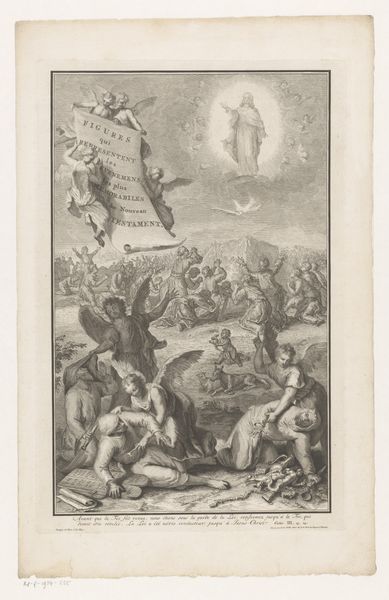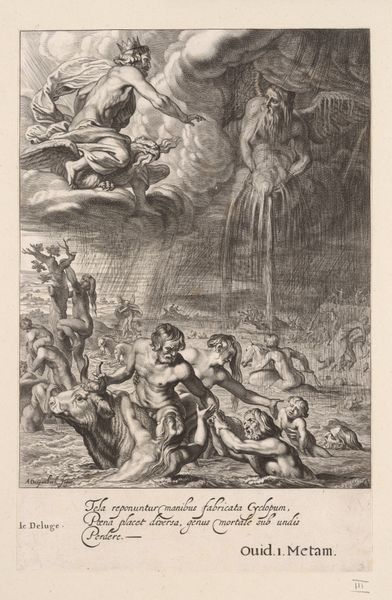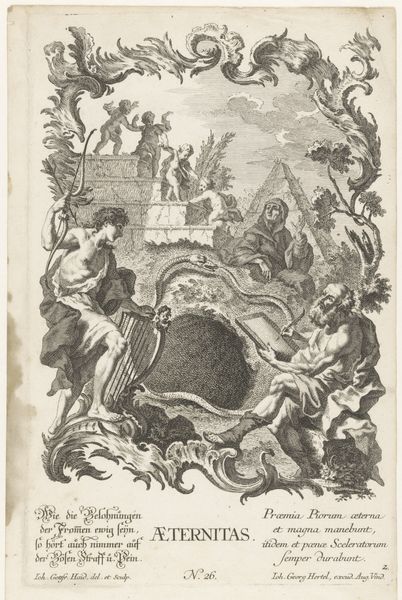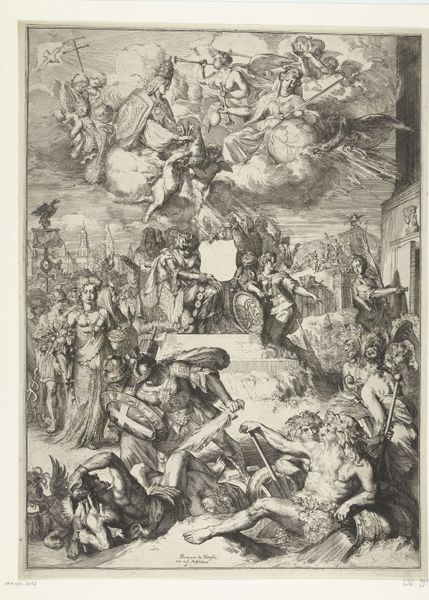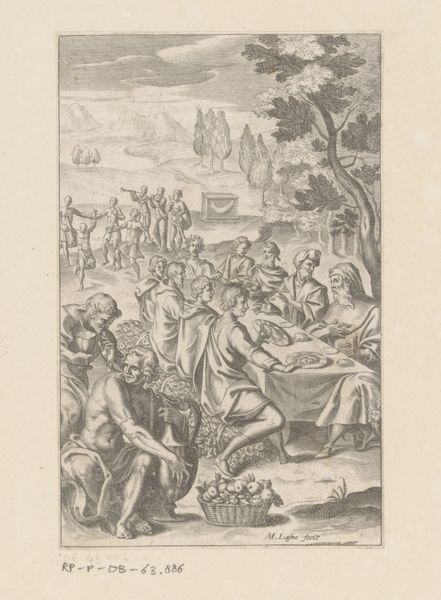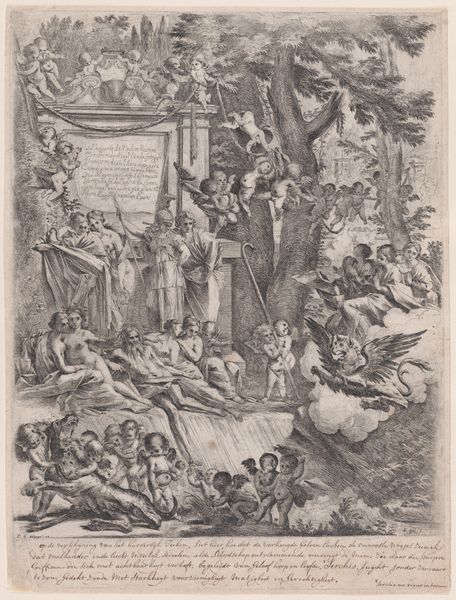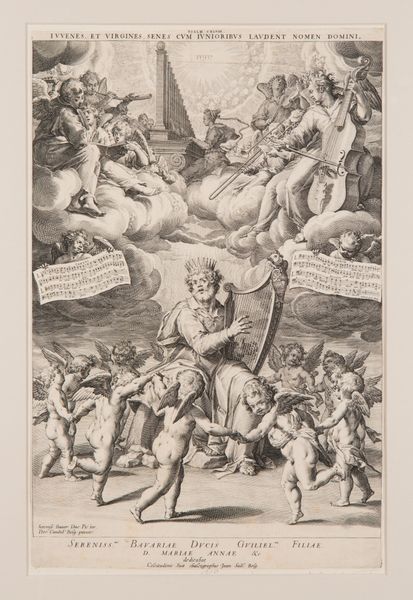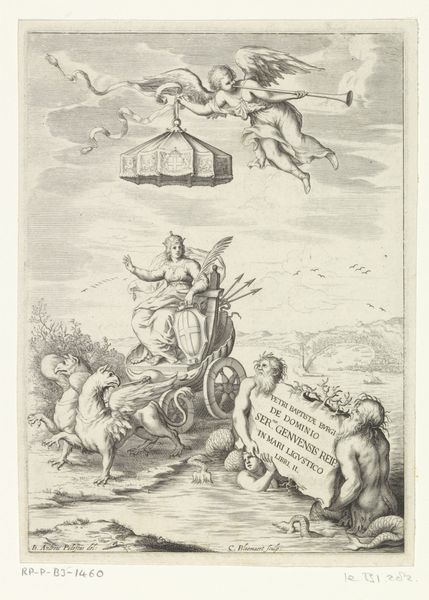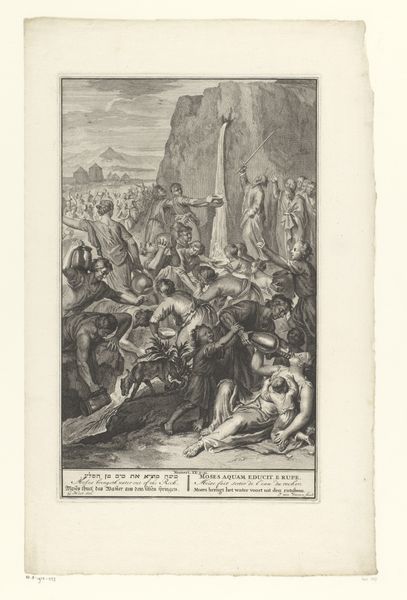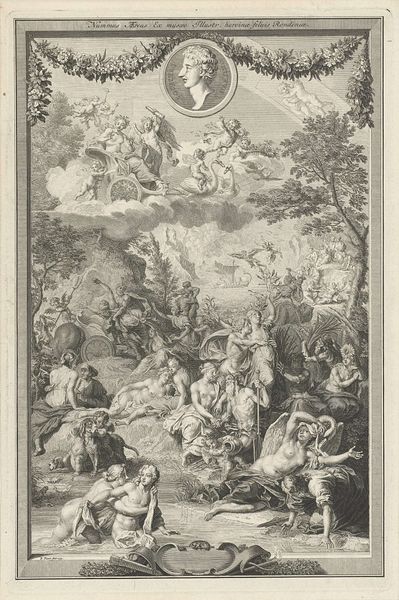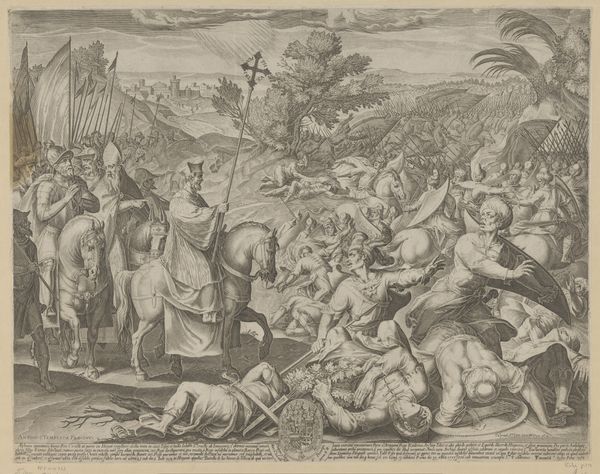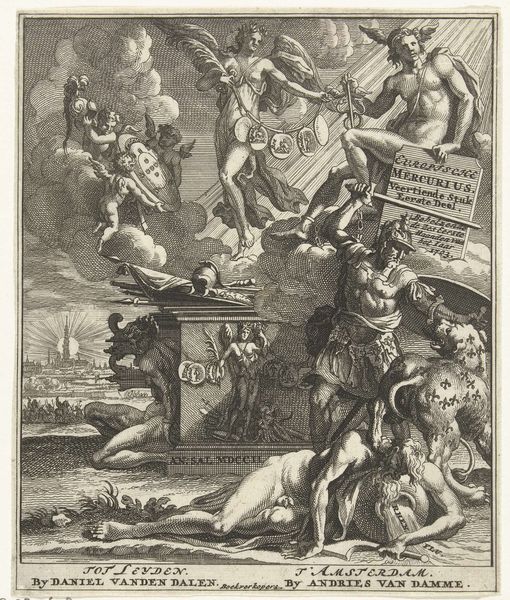
print, engraving
#
baroque
# print
#
figuration
#
line
#
history-painting
#
engraving
Dimensions: height 385 mm, width 241 mm
Copyright: Rijks Museum: Open Domain
Curator: This is "Christus verschijnt aan de hemel," or "Christ Appearing in the Sky," an engraving by Gustav Adolph Müller, likely created between 1704 and 1767. Editor: My first impression is one of…organized chaos. A flurry of figures, text, and heavenly bodies, all meticulously rendered. It seems incredibly busy, and the overall feeling is a sense of anticipation. Curator: Yes, busy but controlled! It’s a print, so consider the labor involved in its creation. The precise lines of the engraving, all carefully etched to produce this detailed image—think of the skilled craftsperson behind it all, meticulously transferring a design. Editor: And speaking of design, look at the central placement of Christ, bathed in light, floating serenely above the turmoil below. It's a classic visual representation of hope and divine intervention, isn’t it? Note how every character seems to react or pray in unison! This work is less about human accomplishment, and more about how those people perceived Christ. Curator: True, there’s a tension between earthly struggles and heavenly grace. But even the concept of divine grace had very earthly consequences in that moment. Look at the composition—the weight is at the bottom, distributed more and more up to Christ as he ascend upward, floating to the viewer. It's a brilliant balancing act of visual components and theological concept. Editor: Exactly! Consider the symbolic weight of the figures, the light as a common cultural understanding of god, even the angels pointing directly at Jesus! Curator: Indeed, that's fascinating—and I see your point, examining the deeper symbolic elements. To see how earthly labor is transmuted into the expression of belief and devotion, shaped by social, political, and of course religious forces. Editor: Right, but tracing the enduring impact and presence of such imagery, we start seeing these symbolic traditions taking root, allowing us to trace history back. What do you take away most after viewing it again? Curator: I am again thinking of the materials, that a carefully handled engraving became a conveyor of these meanings. The contrast of black and white to communicate complex scenes. Editor: To me, it is always how artists embed all these cultural cues we learn by observation, helping to reinforce the ideas within those eras.
Comments
No comments
Be the first to comment and join the conversation on the ultimate creative platform.
